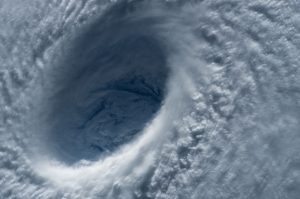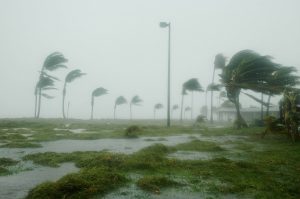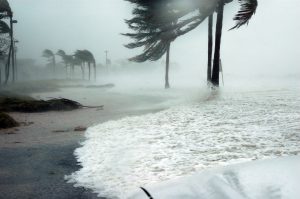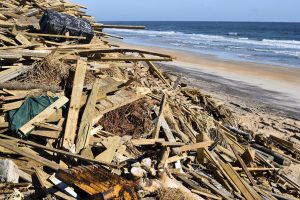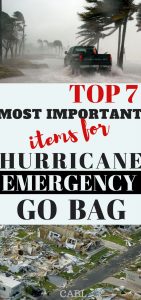What to Pack in Your Emergency Go Bag For Hurricane Evacuations
As a Floridian, Hurricane's are always in the back of our mind. They are a constant concern from the official National Weather Service dates for the Atlantic hurricane season starts on June 1 and will run until Nov. 30. That coupled with the fact that we've already had lots of rain and tropical weather, as well as the predictions for an above average season, have us on the ready.
This post may contain affiliate links, which means I may earn some money if you click on one. Read the full disclaimer here.
According to Inside Climate News:
Hurricane Season 2018: Experts Warn of Super Storms, Call For New Category 6.
Colorado State University, which also issues a key hurricane outlook, revised its expectations downward slightly this week. The forecasters said they now expect an average hurricane season, with 14 named storms (including Alberto), six hurricanes and two major hurricanes, with a 51 percent chance of a major hurricane making landfall somewhere in the U.S.
Our initiation into hurricanes came in 2004 and 2005 when we had first moved to Florida. Talk about dropping us into the fire!
According to wiki:
There are four notable storms: Hurricane Charley, that made landfall in Florida as a Category 4 hurricane on the Saffir–Simpson hurricane wind scale (SSHWS), causing $16 billion in damage in the United States alone. Later in August, Hurricane Francesstruck the Bahamas and Florida, causing at least 49 deaths and $10.1 billion in damage. The costliest and most intense storm, was Hurricane Ivan. It was a Category 5 hurricane that devastated multiple countries adjacent to the Caribbean Sea, before entering the Gulf of Mexico and causing catastrophic damage on the Gulf Coast of the United States, especially in the states of Alabama and Florida. Throughout the countries it passed through, Ivan caused 129 fatalities and over $26.1 billion in damage. The deadliest storm was Hurricane Jeanne. In Haiti, torrential rainfall in the mountainous areas resulted in mudslides and severe flooding, causing at least 3,006 fatalities. Jeanne also struck Florida, inflicting extensive destruction. Overall, the storm caused at least $7.94 billion in damage and 3,042 deaths, ranking it as one of the deadliest Atlantic hurricanes in history.
The 2005 Atlantic hurricane season was the most active Atlantic hurricane season in recorded history, shattering numerous records. The impact of the season was widespread and ruinous with an estimated 3,913 deaths and damage of about $180.7 billion, the 2nd costliest on record, only surpassed by the 2017 season. Of the storms that made landfall, five of the season's seven major hurricanes—Dennis, Emily, Katrina, Rita, and Wilma—were responsible for most of the destruction. Stanwas the most destructive storm that was not a major hurricane.The 2005 Atlantic hurricane season was the most active Atlantic hurricane season in recorded history, shattering numerous records. The impact of the season was widespread and ruinous with an estimated 3,913 deaths and damage of about $180.7 billion, the 2nd costliest on record, only surpassed by the 2017 season.
Getting out of Florida is extremely difficult due to the fact that there are only 3 thoroughfares exiting the state (95, the turnpike and A1A). These are backed up for literally hours. We did not want to be stuck on the highway when it came through. Shelters fill up fast too so ultimately we decided to hunker down as they say. While there the first time, we huddled in our laundry room because it was the most closed off room in our home. Being the first, it was extremely frightening.
Port St. Lucie was hit directly by Hurricane Frances (as a Category 2 hurricane) on September 4, 2004, and by Hurricane Jeanne (as a Category 3 hurricane) on September 26, 2004. On October 24, 2005 Port St. Lucie was hit directly by Hurricane Wilma (as a Category 3 hurricane).
Even though we typically stay at our home, and I've shared that emergency list previously, I wanted to share my list for our go bag items if the hurricanes force us out of our home. It may seem like a large list, but you want to be prepared for any situation.
Assemble this now so you are prepared.
Go Bag Essentials
First and foremost you'll need water and food. Water is extremely hard to come by once a named storm is on its way. Stores supplies are quickly depleted. Often overlooked, basic medical supplies may be all you have since emergency services shut down completely in the midst of the storm and do not start back up until the storms end.
WATER -one gallon of water per person per day for at least three days, for drinking and sanitation
Note: I start purchasing cases the end of May. If you find yourself without and a storm coming, supplies are quickly depleted and you may need to order.
FOOD - at least a three-day supply of non-perishable food
- Ready-to-eat canned meats, fruits, vegetables and a can opener
- Protein or fruit bars
- Dry cereal or granola
- Peanut butter
- Dried fruit
- Canned juices
- Non-perishable pasteurized milk
- High energy foods
- Food for infants
- Comfort/stress foods
MEDICAL:
- First Aid Kit
- Adult Tylenol and Advil/Baby Tylenol and Advil
- Benadryl or other allergy medication
- Cortisone cream
- 1 pair of eye contacts and solution, or glasses
- Gauze and bandages
- Prescription medications
MISC:
- Battery-powered or hand crank radio and a NOAA Weather Radio with tone alert
- Flashlights and Headlamps
- Extra batteries
- Lighters and Matches
- Whistle
- Dust mask to help filter contaminated air and plastic sheeting and duct tape to shelter-in-place
- Moist towelettes, garbage bags and plastic ties for personal sanitation
- Wrench or pliers to turn off utilities
- Manual can opener for food
- Local maps
- Cell phone with chargers and a backup battery
- Plastic bags
- Dawn dish soap
- Plastic bowls, cups, and utensils
- $50-$100 in cash
- Backpacks to hold the items
CLOTHING:
- 1 outfit per adult
- 2 pairs of socks and underwear per adult
- 1-2 outfits for each child (one size up)
- 1 pair of socks (per child)
BABY:
- Sunblock
- Rash cream
- blankets
- toys, teethers, pacifiers
- Formula
- 1 package of diapers (per child)
- 1 package of baby wipes
TOILETRIES:
- Toilet Paper
- Deodorant
- Toothbrushes /Toothpaste
- Shampoo/Conditioner
- Soap
- Razors
- Feminine hygiene products
- Deodorant
- Hand sanitizer
IMPORTANT PAPERWORK:
- List of emergency phone numbers
- Birth/Marriage certificates
- Social Security Cards
- Insurance Cards
- List of emergency phone numbers
You don't know where you may be or what circumstances might be so be prepared by having the main supply at home and ready to grab quickly. You may be at work so be sure to have a go-bag in your car.
PIN IT!

